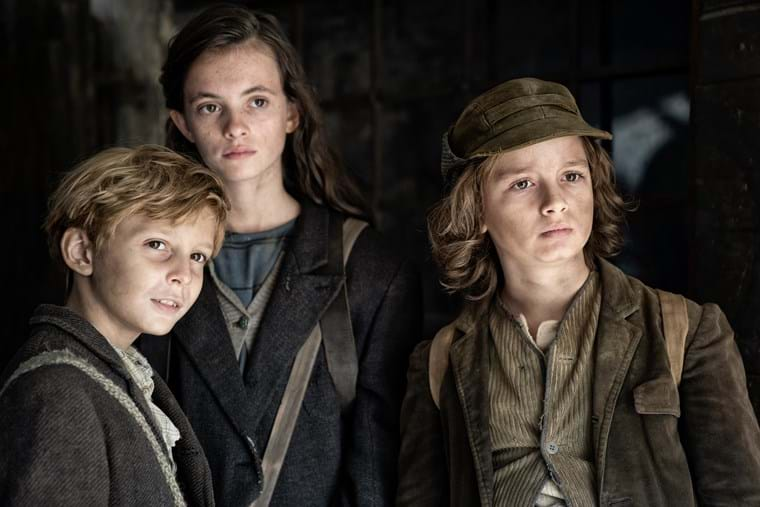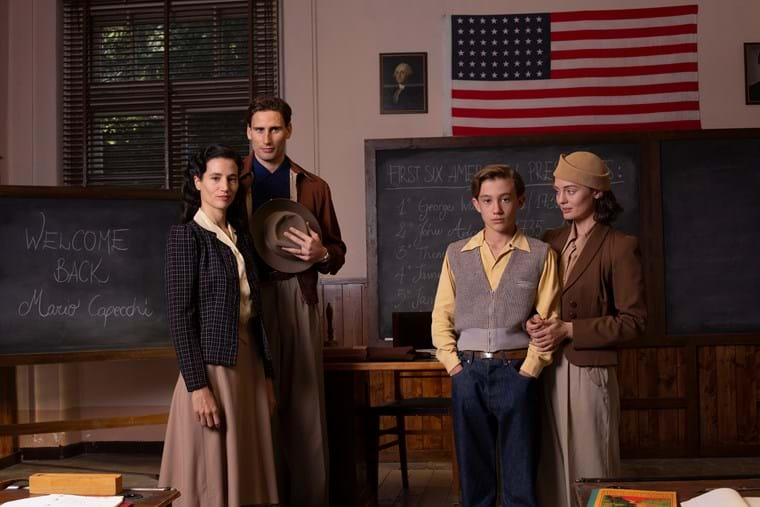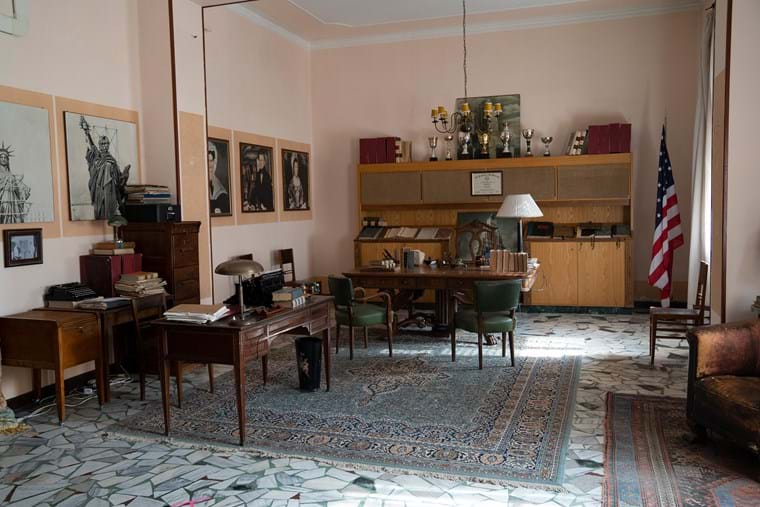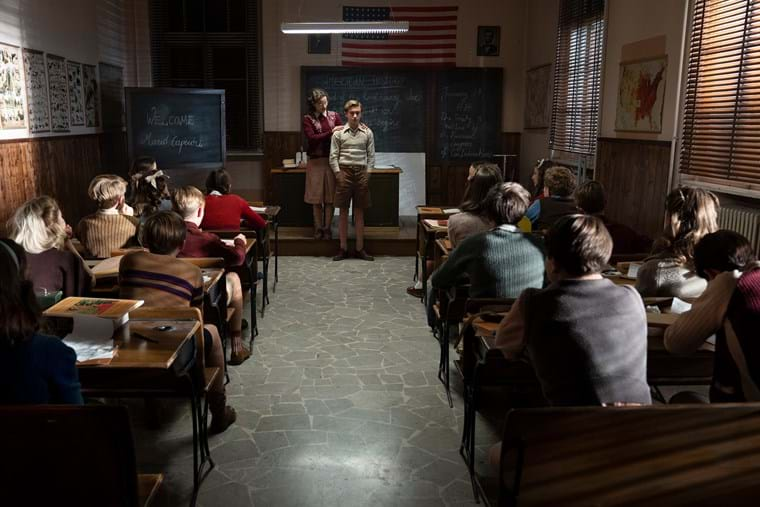Mario Capecchi’s story is a South Tyrolean tale that begins in Bolzano, continues in the United States and culminates in Stockholm. The story isn’t over there, either, since the protagonist is still living. Elda Ferri’s Jean Vigo Italia has decided that now is the time to tell this story, however, in collaboration with Rhino Films and Rai Cinema, in a film called Hill of Vision (working title: Resilient). The decision to bring Capecchi’s life to the cinema was actually made twelve years ago. But the production finally began in 2020, amidst many difficulties posed by the Covid-19 crisis.
Mario Capecchi was just five years old when his mother, an anti-Fascist, was deported to a concentration camp, leaving him in the care of farmers on the Renon Plateau, above Bolzano. Hill of Vision starts at this point, at the height of the Second World War in 1943, when the farmers no longer have the resources to support the child entrusted to them. They therefore abandon him and, at the tender age of five, Mario finds himself a vagabond between Bolzano and the surrounding countryside.
“More than half the film takes place during this period,” says Roberto Faenza, the film’s director and screenwriter. “Even I myself, who read the whole story and talked to Capecchi, wonder how it was possible for a child to survive on his own from age five to age ten, without ever even eating a hot meal.”

Even as a child, Mario Capecchi had this resilience. This detail impressed the producer Elda Ferri twelve years ago, when she first came into contact with this extraordinary life story at a conference held by Capecchi in Bologna. She had read about the event in the newspaper and had felt there was something special behind it. “I wanted to meet him immediately,” Ferri recalls. “Fortunately, he had seen one of my previous films, Life Is Beautiful. That helped us a lot in convincing him that his extraordinary life could be the subject of a film.”
Three kids on the streets
For nearly all of his childhood, Capecchi lived on the streets of Bolzano, a homeless boy surviving partly thanks to other children with whom he formed a small gang. These details are actually impossible to romanticize, as Faenza says: “In this story, you have to take some details out, not embellish it. Otherwise, people wouldn’t believe it’s a true tale. Three children – one six, one eight and one four-and-a-half years old, the latter deaf-mute and found under the rubble – formed a little family, helped each other and survived through begging, stealing and earning the pity of rich ladies. It’s really very moving.”
If putting together such a production is already difficult, the pandemic hit just when they finally managed to get it going. It was March of 2020 and, like many other productions, Hill of Vision was halted even before filming began. Courageously, Jean Vigo Italia decided to start again as soon as possible: in June, and in compliance with all of the anti-Covid protocols. “We spent 108,000 euros just on testing. We had three people on set who were responsible for Covid measures. And the lead actress, being a member of the American union SAG, had to be tested three times a week,” says Elda Ferri when we visit the set in Merano. “All of that without taking into consideration the necessary distancing rules or the fact that we have to sanitize the entire set every night, including the costumes and a 300-square-meter wardrobe shop,” the latter being run by four-time Oscar-winning costume designer Milena Canonero.

Pennsylvania and Art Deco
Hill of Vision being a South Tyrolean story, the production was conceived from the beginning to be shot almost entirely in South Tyrol, thus drawing on the IDM Film Fund’s regional production fund. The second phase of Capecchi’s life, however, takes place in the US, not the Alps. After contracting typhus, he was hospitalized in Reggio Emilia. That’s where his mother, at last, found him with the help of the Red Cross. Once he recovered, they emigrated to Pennsylvania, where his maternal uncle and aunt would ensure his education. That part of the film was supposed to be shot in the United States; the locations had even been set. But the unforeseeable is always around the corner and, owing to the pandemic, the American shoot became unthinkable.
But Jean Vigo found America in South Tyrol thanks to location manager Valeria Errighi, who then passed the ball to Giuseppe Zampella. Hailing from Milano, Zampella moved to Bolzano six years ago and, despite not being a local, has become a location manager with great results since his first experience, when Terrence Malick came to shoot part of A Hidden Life in South Tyrol.
Hill of Vision’s location managers found Pennsylvania on the Salten plateau: “The mountains and vegetation there lend themselves very well to the American story,” explains Zampella, adding that, contrary to what you might think, it wasn’t difficult to find landscapes that could represent the US. Roberto Faenza himself describes it as a stroke of good fortune that he didn’t shoot in the United States after all, because those places, as he says, are completely different today. Whereas, having found them in South Tyrol, the production had landscapes just as they used to be in the US, 70 years ago. And the production was able to create what was missing: an entire Quaker village, consisting of house facades, was rebuilt, together with a school; a period doctor’s office was also built in Merano.

The problem was the interiors, if anything: “In South Tyrol the interiors are quite characteristic, but we needed historical ones. Finding a 1930s American art-deco building in these parts wasn’t easy,” explains Zampella, whose job in these cases is to go around, get to know people, and talk to them to find the perfect spot: “First you go to areas close to other locations for reasons of logistics. Then you’ll come into contact with someone local, show some photos of what you’re looking for and it often turns out that they know somebody with similar interiors.”
It was the renowned set designer Francesco Frigeri who was responsible for the look of the interiors, including planning the American towns and the sequence of Mario Capecchi’s voyage to America, for which Jean Vigo rebuilt the deck of a ship in a studio, with a green screen to digitally create the rest of the vessel.
A South Tyrolean epic
Starting from there, the film traces Capecchi’s life in America, where he arrives illiterate, without knowing anything about life and especially with no knowledge of English, so much so that the teachers consider him rather unintelligent. It will be his aunt and uncle, whose education and scientific mindset – his uncle in particular had been among the first to design a color television set – allows them to understand how to improve the boy’s academic performance.
On the day we visit the set, it is those very school scenes that are being shot, reconstructed perfectly at the Cesare Battisti Barracks in Merano: a perfect example of what has changed in South Tyrol’s film industry in the last ten years. The influx of productions has created a new mentality, so much so that the barracks and its many unused rooms and large spaces regularly house film productions. “They’re practically little studios,” explains Giuseppe Zampella, “because it’s a protected, closed area with disused buildings that lend themselves to a variety of different productions, including horror and thrillers. We’ve rebuilt police stations and orphanages here... everything. And this isn’t the only place that has embraced this production,” continues the location manager. “Hearing the story of Hill of Vision persuaded even those who are not familiar with being on set, and perhaps dubious about the whole thing, to make space and property available. When I tell the story, it convinces everyone. Because it is a South Tyrolean epic with many different levels of interpretation.”
And the region has given us some of its own, says Zampella: “While it is true that today, in South Tyrol, we mostly host productions, there is a great desire to start producing locally as well.” Many local film professionals who worked on Hill of Vision got their job training in the province, like Zampella himself.
Stuntmen and Stockholm
Roberto Faenza is enthusiastic: “The know-how of the crew members is amazing here, yes, but then there are also the faces! The kids we use for the scenes set in the school are fantastic and extremely intelligent: they understand everything.” The director cites stunt coordinator Jakob Watschinger as an example of the great skill of local professionals; the production’s general organizer Raffaella Cassano says he’s one of the best she has worked with. And the special effects studio Impact Productions, which, among other things, recreated the explosion set off by the young Capecchi in a bus on its way to school, in order to punish a bully.

These are the most spectacular and harshest sides of Mario Capecchi’s life, who was struggling to integrate into the new American school because of the aggressiveness he developed during his years on the streets. His aunt and uncle found it necessary to divert all that passion into sports, wrestling in particular, so that he would learn to control it. The stunt coordinator was needed especially in the wrestling scenes.
It is at this point in 1947, when Capecchi is finally ready for a normal life, that the film ends: “What we recount is his entering into a new society and a new dimension of life, with all the resilience that he has gained in those few years,” explains Faenza. To tell the truth, though, there’s still one last thing to tell. Having overcome the first difficulties in America, Capecchi will become a scientist. And decades later, his DNA research will earn him a Nobel Prize in Medicine, together with his colleagues Martin Evans and Oliver Smithies. It was at this juncture that the final feat of production took place: thanks to modular construction inside one of the local studios in South Tyrol, the production recreated the facade of the Stockholm Konserthuset. It was there that the prize was awarded to Capecchi: the crowning of an incredible life.